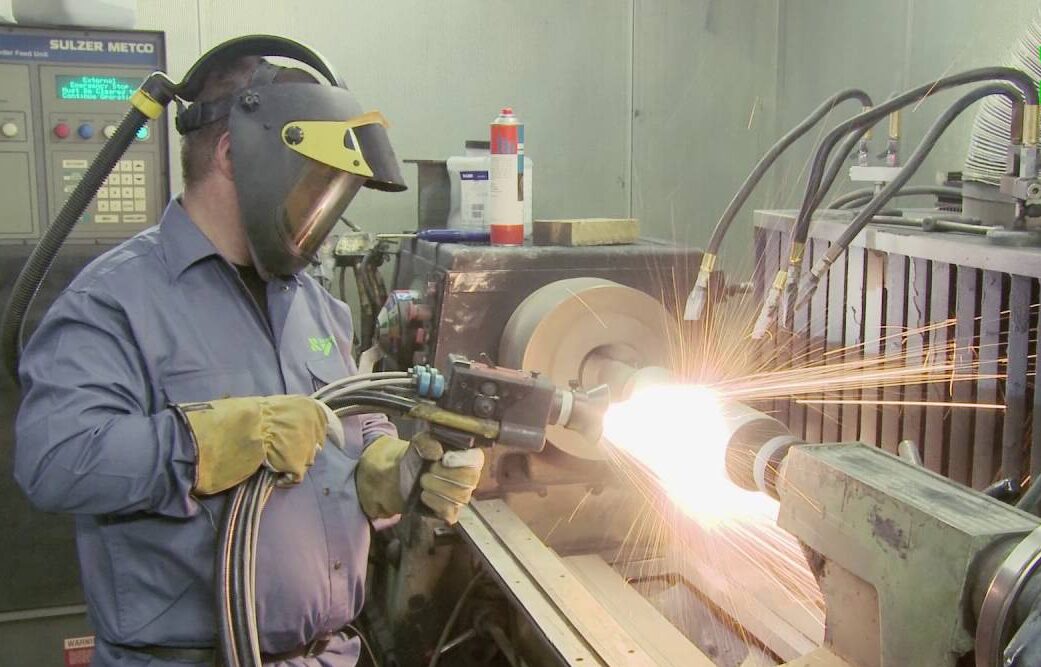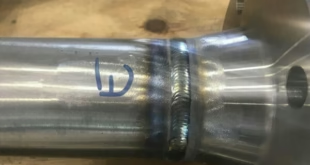Electric Arc Spraying
Introduction
Electric arc spraying is a versatile and innovative technique widely used in the welding and coating industry. This method, which involves the use of electric arcs to melt and project materials onto a surface, has gained popularity due to its efficiency and ability to enhance the durability of various components. Whether you’re in the automotive industry or working on aerospace applications, electric arc spraying offers a reliable solution for protecting and extending the life of your products.
What is Electric Arc Spraying?
Electric arc spraying is a thermal spraying process where two consumable metal wires are fed into an electric arc. The intense heat from the arc melts the wires, which are then atomized by a stream of compressed air and propelled onto a prepared surface. This process creates a coating that adheres to the substrate, providing a protective layer that can resist wear, corrosion, and high temperatures.
The history of electric arc spraying dates back to the early 20th century when it was first developed as a method for applying coatings to large structures like ships and bridges. Over time, advancements in technology have refined the process, making it more efficient and expanding its applications to various industries.

How Electric Arc Spraying Works
At the core of electric arc spraying is the creation of an electric arc between two consumable wire electrodes. These electrodes, usually made of the material that will form the coating, are continuously fed into the arc. The arc’s heat melts the tips of the wires, forming molten droplets. A jet of compressed air then atomizes these droplets and accelerates them toward the target surface.
Materials Used in Electric Arc Spraying:
The materials commonly used in electric arc spraying include metals like zinc, aluminum, and copper. These materials are chosen based on the specific requirements of the coating, such as corrosion resistance, electrical conductivity, or thermal insulation.
Equipment Required for Electric Arc Spraying:
The essential equipment for electric arc spraying includes a power supply to create the arc, wire feeders to supply the consumable electrodes, an air compressor to atomize and propel the molten particles, and a spray gun that directs the material onto the surface.
Advantages of Electric Arc Spraying
Electric arc spraying offers several advantages that make it a preferred choice in many industries:
Enhanced Durability and Protection:
The coatings produced by electric arc spraying are known for their durability. They provide excellent protection against corrosion, wear, and environmental factors, extending the lifespan of the coated components.
Versatility in Application:
This technique can be used on a wide range of substrates, including metals, ceramics, and even some polymers. Its versatility makes it suitable for various applications, from protecting industrial machinery to coating automotive parts.
Cost-Effectiveness and Efficiency:
Compared to other thermal spraying methods, electric arc spraying is relatively cost-effective. The process is fast, and the equipment is generally less expensive, making it an efficient option for large-scale applications.
Applications of Electric Arc Spraying
Electric arc spraying is used in a variety of industries due to its adaptability and effectiveness:
Industrial Applications:
In heavy industries, electric arc spraying is used to apply protective coatings on machinery, pipelines, and structures that are exposed to harsh environments.
Automotive Industry:
In the automotive sector, electric arc spraying is employed to coat engine components, brake discs, and other parts that require wear resistance and thermal management.
Aerospace and Defense Sectors:
The aerospace and defense industries utilize electric arc spraying to protect aircraft components, such as turbine blades and landing gear, from extreme temperatures and corrosive environments.
Comparison with Other Thermal Spraying Techniques
While electric arc spraying is highly effective, it’s essential to understand how it compares to other thermal spraying techniques:
Electric Arc Spraying vs. Flame Spraying:
Flame spraying uses a combustion flame to melt the coating material, which is then sprayed onto the surface. While flame spraying is suitable for certain applications, electric arc spraying generally provides a denser and more uniform coating.
Electric Arc Spraying vs. Plasma Spraying:
Plasma spraying utilizes a high-temperature plasma jet to melt the coating material. While plasma spraying can achieve higher temperatures and is suitable for more complex materials, electric arc spraying is more cost-effective and easier to operate.
Pros and Cons of Different Techniques:
Each thermal spraying technique has its strengths and weaknesses. The choice between them depends on the specific requirements of the project, such as the type of material, the desired coating properties, and budget constraints.
Challenges and Limitations
Despite its many advantages, electric arc spraying does have some challenges:
Common Issues in Electric Arc Spraying:
Some common problems include inconsistent coating thickness, porosity in the coating, and the need for careful surface preparation. These issues can affect the overall quality of the coating and may require additional steps to resolve.
How to Overcome These Challenges:
Proper equipment maintenance, thorough surface preparation, and controlling the spraying parameters can help mitigate these challenges. Using high-quality materials and following best practices also contribute to achieving optimal results.
Safety Measures and Best Practices
Safety is paramount when performing electric arc spraying:
Safety Precautions During Electric Arc Spraying:
Operators should wear appropriate personal protective equipment (PPE), including gloves, face shields, and protective clothing. It’s also crucial to ensure proper ventilation and avoid inhaling fumes generated during the process.
Best Practices for Optimal Results:
To achieve the best results, maintain a consistent spraying distance, control the spray angle, and monitor the coating thickness throughout the process. Regular equipment maintenance and calibration are also essential for producing high-quality coatings.
Future Trends in Electric Arc Spraying
As technology advances, electric arc spraying continues to evolve:
Technological Advancements:
Recent developments in automation and robotics have improved the precision and efficiency of electric arc spraying. Additionally, new materials and coatings are being developed to meet the growing demands of various industries.
Emerging Applications and Innovations:
Electric arc spraying is finding new applications in emerging fields like renewable energy, where it is used to coat components of wind turbines and solar panels. The technique’s versatility and effectiveness make it a valuable tool in the future of manufacturing and engineering.
FAQs
What materials are best suited for electric arc spraying?
Materials like zinc, aluminum, and copper are commonly used, depending on the desired properties of the coating, such as corrosion resistance or thermal conductivity.
How does electric arc spraying differ from other welding techniques?
Unlike traditional welding, electric arc spraying involves spraying molten material onto a surface rather than joining two materials together. It’s primarily used for coating rather than bonding.
What are the most common applications of electric arc spraying?
Common applications include protecting industrial machinery, automotive parts, and aerospace components from wear, corrosion, and high temperatures.
What safety measures should be taken during electric arc spraying?
Operators should wear PPE, ensure proper ventilation, and follow best practices to prevent accidents and ensure high-quality results.
Can electric arc spraying be used in DIY projects?
While possible, electric arc spraying is generally best suited for industrial applications due to the specialized equipment and safety considerations required.
Conclusion
Electric arc spraying is a powerful technique that offers numerous benefits for protecting and enhancing the durability of various components. From industrial machinery to aerospace parts, this method provides a reliable and cost-effective solution for a wide range of applications. As technology continues to advance, electric arc spraying will likely play an even more significant role in the welding and coating industry, offering new possibilities and innovations.
 Welding of Welders All about Welding and Welders
Welding of Welders All about Welding and Welders



